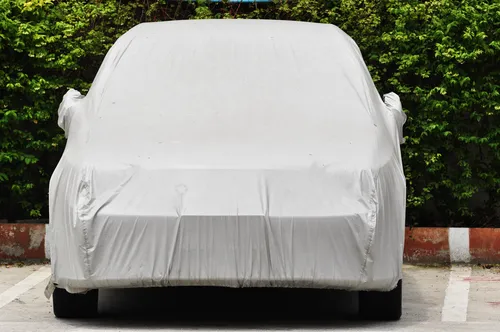How to Store Your Car in a Self-Storage Unit

Whether you’re going away for an extended time or you don’t have the room to store a vehicle, self-storage units can free up space and provide a safe environment for the cars you want to preserve.
But putting your car in a self-storage unit isn’t as simple as just parking it for months on end. In fact, neglecting certain things ahead of time can damage the mechanics and the body of your vehicle.
This article will walk you through how to store your car in a self-storage unit to ensure it stays in great shape while it’s there.
Choose the Right Storage Unit
Opt for a facility with a gated entry and security cameras. Cars are valuable items, and insecure or infrequently visited storage units are at a greater risk of theft.
Vehicles can be stored in three ways:
- In the open
- In covered parking areas
- In enclosed units
Depending on which type of storage facility you choose, if you’re leaving the car for more than a few days, we recommend an enclosed unit for protection from weather and potential tampering.
Next, determine how much space your car needs. Units suitable for cars are typically 10 feet wide and range from about 10 to 30 feet in depth. In general, cars/SUVs/trucks will need between 15 and 25 feet. Be sure to include the side view mirrors when you measure your car (some side view mirrors fold in, which may save you a few inches).
Gather Important Documentation
You’ll need to prove ownership and registration for any vehicle you want to store in a self-storage unit. When you talk to the storage facility, be prepared with the following documentation:
- Title
- Registration
- Proof of insurance
- Photo ID
- Plate number
Prepare your Car for Storage
Before you do anything, see if the auto manufacturer provides details for storing your particular vehicle. Typically, the following steps are necessary for protecting the body, interior and mechanics of your car:
- Clean the interior, including dusting, vacuuming and taking out all trash and other items. More than keeping the car clean for future use, this will reduce any smells that might attract pests (which is less likely with enclosed units, but still possible). Also, treat any vinyl with conditioner to keep it from drying out.
- Wash and wax the exterior to prevent damage to the body. The car should be completely dry when it enters the unit and under a proper car cover (plastic tarps can scratch the paint). However, if humidity is a concern, a cover could trap moisture with the car.
- Fill the tires to their maximum inflation pressure to prevent flat-spotting, which are flat spots in tires from prolonged pressure.
- Change the oil and top off the brake fluid, antifreeze and coolant to avoid corrosion and oxidation.
Leaving your Car in the Storage Unit
When you leave the car in the storage unit, take the following steps before shutting the door. Like the preparations, these will protect the car’s body and mechanics, but can’t be done until you’re finished driving:
- Ensure the interior and exterior are completely dry and give the car a final wipe-down to remove any residue from the drive over.
- Remove the battery to keep acids from leaking onto other car parts. If you aren’t removing the battery, at least disconnect it so it doesn’t slowly drain. Be aware that in newer cars, removing the battery will reset the computer.
- Remove the antenna and windshield wipers and leave them in the trunk.
- Back the car into the storage unit so it’s easier to reinstall or jump the battery.
- Disengage the parking brake; if engaged for too long, the brake pads can fuse with the rotors. Use chocks if you’re concerned about the vehicle moving.
- Put up convertible tops, shut windows and vents, and block the exhaust pipe to keep pests out.
- Store the car on blocks or jacks if you’re concerned about flat-spotting. This will also preserve the suspension components.
- Leave a set of jumper cables in the trunk.
- Lock the car and put on the car cover.
- Surround the outside of the car with cedar, mothballs and/or rodent traps to stop pests before they get in (again, this is less common in an enclosed unit, but still possible).
Car Care During Storage
A few simple tasks will keep your car healthier during storage:
- Start and drive the car every one to two weeks to keep the mechanics as healthy as possible. This is especially important if the battery is still installed. Note that the car must be running to be stored in the first place.
- Do not do work on the car while it’s in storage. Facilities generally don’t allow this due to concerns about spills.
- Never start the car with the exhaust pipe covered or the storage unit’s door closed.
Now that you know how to store your car in a self-storage unit, you can preserve that cherished vehicle for future use! Storage Post offers a range of self-storage unit types and sizes, and availability varies by location. Contact a self-storage location near you to learn what we have for your car.
Up To Two Months Free!
For a limited time, get up to two months rent free* on selected units.